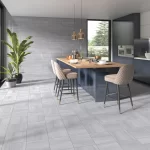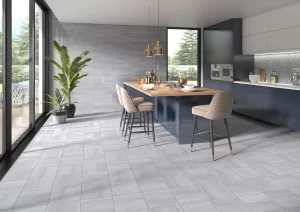The Basics of Plumbing and Sanitary Systems
3 min read
Plumbing and sanitary are the systems that supply us with water and remove wastes. They are essential to the health of building occupants. The housing inspector should be familiar with the basics of these systems to identify housing code violations that may be related to plumbing.
Sanitary plumbing implies piping that doesn’t harbor contaminants or allow mixing of process liquids. This requires equipment that can be easily cleaned.
Water Supply
A water supply system is a crucial lifeline to modern societies, providing services vital for daily functions and for recovery from disasters. It comprises of facilities for storage, transmission, treatment, and distribution.
It is important for the plumber to know how to connect house / building piping systems with water supply & sewerage system. Otherwise, contamination of protected water supplies from sewage & other liquid wastes is likely to occur.
A septic tank is an underground watertight receptacle designed and constructed to separate and retain deleterious matter through a period of detention, and permit normal sewage and liquid wastes to discharge into the drainage system through the seepage pit. Improper septic tank installation may result in illegal storm water collection and hydraulic overload of public sewerage system during heavy rainfall leading to pollution of environment and health risks for the people. Thus, the proper connections of septic tanks with the house plumbing system must be made with suitable back flow preventive devices.
Drainage
Drainage is the arrangement of pipes that remove wastewater and rainwater from buildings, yards and other areas to ensure that contamination does not build up. It can also prevent flooding and water damage. A good drainage system allows waste and debris to be easily disposed of, while keeping water clean.
This can be achieved through a variety of methods, including surface drains, French drains and subsurface drainage systems. These drains are important because they help to reduce mud, soil and sand infiltration and lower moisture levels to improve ground stability and enhance horticultural properties for landscaping.
Sanitary drainage is one of the most important aspects of plumbing and sanitary, especially in kitchens, bathrooms, public spaces and any facilities that handle food. Its construction is specially designed to prevent bacteria and contamination, ensuring that the space stays cleaner and safer for people. Companies like FoodSafe Drain manufacture sanitary drains that use non-porous stainless steel. This material is bacteria-resistant and can withstand harsh cleaning chemicals, making it the ideal choice for drains.
Venting
The plumbing vent pipes bring air into the drainage system to regulate the pressure. They are also essential to remove odours from the home. Without a functioning vent, dangerous sewer gases such as methane could back up through drains. They are also responsible for carrying waste to the septic or town sewer systems.
It may be surprising to learn that the humble plumbing system in your home is actually comprised of two different systems – the drainage system and the ventilation system. The drainage system is responsible for draining water and sewage away from the sinks, baths and toilets into the sewer. The venting system prevents sewer gas from entering the house and allows wastewater gases and odours to escape through a vent stack on the roof (installed far from windows and air conditioning units so that the odours can dissipate). Sanitary plumbing also includes work by authorised tradesman plumbers, journeyman plumbers or limited certificate (trainee) plumbers.
Fixtures
Plumbing involves the construction, installation and maintenance of piping, fixtures and appliances that supply water for drinking and washing. It also includes the drainage of wastes and sewage to an approved point of disposal.
The plumbing system also comprises the venting system, which prevents siphonage of fixture drain traps by ensuring that air is continuously supplied to the traps. A vent system typically consists of a main stack (the primary artery of the stack), branch connecting pipes and fixture vents.
It is important that the pipes used for supplying water to fixtures are adequate in size. Small-sized pipes are prone to bursting and leaking, and they can restrict the flow of water to fixtures. Similarly, pipe connections should be tight and water pressure should be maintained at a desirable level to ensure continuous supply of water. In addition, corroded pipes should be replaced with new ones to avoid water wastage and prevent contamination of potable water.

















